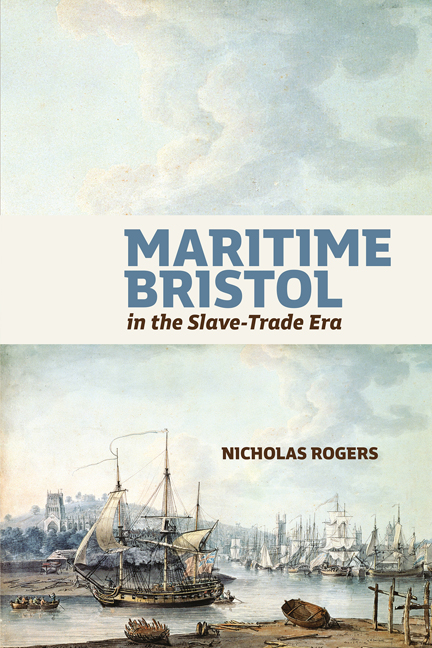Book contents
- Frontmatter
- Dedication
- Contents
- List of Figures
- Acknowledgments
- List of Abbreviations
- Introduction: High Tides, Atlantic Waters
- 1 The Pilots of Pill
- 2 The Hazards of the Bristol Slave Trade
- 3 Slave-ship Sociology
- 4 The Unfortunate Shipwright, or, the Trials of Robert Barker
- 5 Mutiny and Murder on Bristol’s Long-haul Ships, 1720–70
- 6 Bristol Privateering in the Mid-eighteenth Century
- 7 The Impressment of James Caton, 1779
- 8 New York in Bristol: the Crugers
- 9 The Politics of Abolition in Late Eighteenth-century Bristol
- Bibliography
- Index
3 - Slave-ship Sociology
Published online by Cambridge University Press: 08 May 2024
- Frontmatter
- Dedication
- Contents
- List of Figures
- Acknowledgments
- List of Abbreviations
- Introduction: High Tides, Atlantic Waters
- 1 The Pilots of Pill
- 2 The Hazards of the Bristol Slave Trade
- 3 Slave-ship Sociology
- 4 The Unfortunate Shipwright, or, the Trials of Robert Barker
- 5 Mutiny and Murder on Bristol’s Long-haul Ships, 1720–70
- 6 Bristol Privateering in the Mid-eighteenth Century
- 7 The Impressment of James Caton, 1779
- 8 New York in Bristol: the Crugers
- 9 The Politics of Abolition in Late Eighteenth-century Bristol
- Bibliography
- Index
Summary
One of the paradoxes of slave-trade history is that while we now know a lot about the gut-wrenching process of turning Africans into slaves and the hazards of trafficking on tropical coasts, we know relatively little about the sailors who manned the ships. To be sure, historians have dredged the smattering of life writings that refer to slave ships, many of which reveal graphic accounts of the brutality of captains and mates and a seaman's induction into the trade. Yet precisely who the sailors were, from what ports they hailed, how they were recruited, remains elusive if not opaque. This has not stopped historians generalizing about slave-ship sailors: they are said to be ‘multiracial’, a ‘motley crew’ from different quarters of the globe.
One exception to this trend is Mike Breward who has made use of the detailed muster rolls of Bristol at the end of the eighteenth century to offer a portrait of slave-ship crews. The muster rolls earlier in the century did not have a lot to offer the historian, which typically record the pay due to sailors for months at sea and the last ships the seamen entered. These rolls were designed to assess the contribution seamen made to the hospital fund, legislated in 1747. In Bristol, the task of tracking the levy and its administration was put under the jurisdiction of the Merchant Venturers, which is why the muster rolls are in its archives. The early rolls tell us little about the social provenance of the seamen beyond noting the port from which they typically sailed, and because captains were sometimes lax about their entries, this information is not always reliable. The differential payments allotted seamen do reveal the number who died or ran during the voyage, those discharged at the port of delivery and the sailors who were impressed or even elected to enter men-of-war during wartime. This information is vital to assessing the volatility of crews. The one other advantage of the mid-century muster rolls is that the more regular ones list the last ship on which the seaman sailed, giving historians a chance to measure persistence, an issue that maritime historians have seldom addressed.
- Type
- Chapter
- Information
- Maritime Bristol in the Slave-Trade Era , pp. 57 - 73Publisher: Boydell & BrewerPrint publication year: 2024

